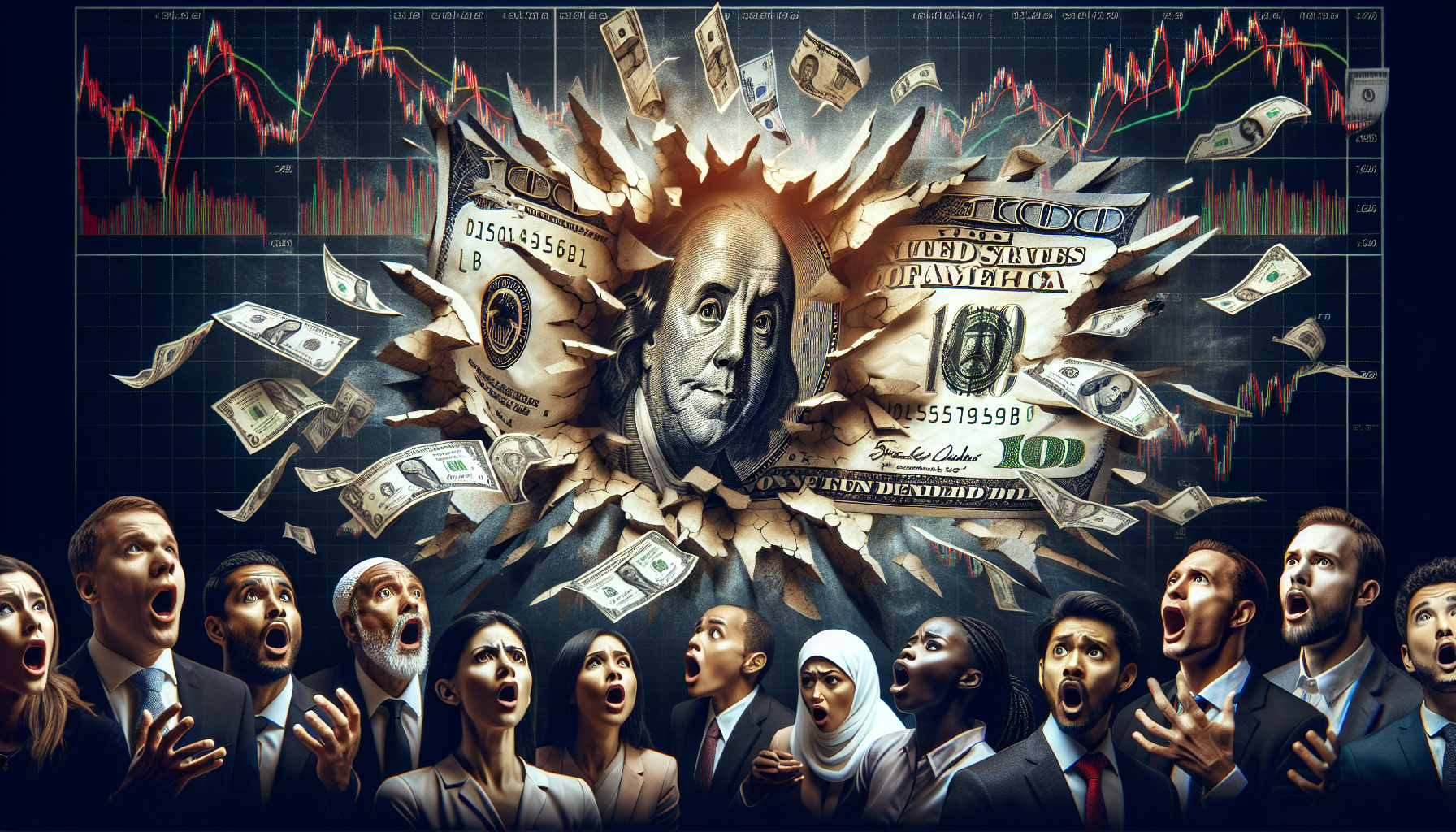
tl;dr
Global markets are buzzing as hedge funds and investors pile into the 'short dollar' trade, betting the U.S. dollar will weaken. But this crowded bet could trigger massive volatility, with risks ranging from short squeezes to cascading market crashes. Here's what you need to know.
**The Short Dollar Trade: A Growing Bet with High Stakes for Global Markets**
In recent weeks, a significant shift has taken hold in global financial markets: bond traders, hedge funds, and global macro strategists are increasingly betting against the U.S. dollar. This surge in “short dollar” positioning—where investors speculate the greenback will weaken—has sparked warnings of heightened volatility across currencies, equities, bonds, commodities, and even cryptocurrencies. As the trend gains momentum, markets are bracing for potential turbulence, with analysts cautioning that the crowded trade could trigger sharp reversals with far-reaching consequences.
### Why the Dollar Is Under Pressure
The surge in short dollar bets stems from a mix of macroeconomic factors and shifting market expectations. Traders are betting that the Federal Reserve is nearing the end of its tightening cycle, with growing speculation that interest rates may soon decline. This anticipation has fueled a wave of bets against the dollar, as investors anticipate a potential pivot in U.S. monetary policy.
Beyond Fed policy, other forces are weighing on the dollar. Fiscal deficits, the global push toward dedollarization in trade, and capital flows into assets like gold and emerging market currencies have all contributed to the greenback’s weakening. Meanwhile, signs of resilience in Europe and Asia—coupled with concerns about a potential slowdown in U.S. growth—have further emboldened short sellers.
Hedge funds and institutional investors have piled into the trade, driven by a combination of macroeconomic headlines and shifting risk appetites. Increased derivative volumes and crowded short positions, as highlighted in financial commentary, underscore the growing concentration of bets against the dollar.
### Volatility on the Horizon
While the short dollar trade has gained traction, it carries significant risks. Large, one-sided positioning can create unstable market conditions. If the dollar experiences an unexpected rebound—due to stronger-than-expected U.S. economic data, such as robust payrolls or inflation figures—it could trigger a “short squeeze.” This scenario forces traders to buy back dollars rapidly, driving prices higher and amplifying volatility.
Bank of America’s Michael Hartnett has warned investors to “buckle up” if the short dollar trade unwinds disorderly. The ripple effects would extend beyond forex markets. U.S. equities, global markets, and Treasury yields could face sudden capital flows as currency hedges are reversed. Gold and oil prices, which often move inversely to the dollar, could swing sharply, while cryptocurrencies—historically sensitive to dollar strength—may face additional pressure.
Despite the dollar’s 10% decline this year, it has shown intermittent resilience during periods of positive economic news. This back-and-forth creates a precarious environment for investors, as positions are repeatedly unwound or reversed.
### The Perils of a Crowded Trade
The danger of a crowded short position lies in its fragility. When too many traders bet on the same outcome, a sudden shift in sentiment or unexpected events can lead to chaotic exits. Analysts warn that markets lack a buffer against policy shifts, economic data surprises, or geopolitical shocks. The question is no longer whether the dollar will continue to weaken, but what happens when a flood of traders rush to exit the trade simultaneously.
### What to Watch: Key Indicators for Investors
As the short dollar trade dominates market narratives, investors are closely monitoring several critical factors:
1. **Fed Policy Signals**: Upcoming interest rate decisions and commentary from Federal Reserve officials will be pivotal. Any hints of a rate cut or policy pivot could fuel further shorting, while hawkish signals may trigger a rebound.
2. **U.S. Economic Data**: Payroll figures, inflation reports, and GDP growth will shape the dollar’s trajectory. Strong data could reignite demand for the greenback as a safe-haven asset.
3. **Global Events**: Political instability, government shutdown risks, and unexpected geopolitical developments could shift capital flows and reignite dollar demand.
4. **Commodity and Crypto Dynamics**: The interplay between dollar strength, gold prices, and crypto markets will remain a key area of focus.
### The Road Ahead
While the short dollar trade remains a favored strategy heading into Q4 2025, history suggests that crowded positions often lead to bumpy rides. Volatility is not just possible—it’s likely. For investors, the lesson is clear: preparedness is essential. As markets navigate the risks of a highly leveraged bet against the dollar, the next few months could test the resilience of global financial systems.
In the end, the dollar’s fate—and the stability of the markets it influences—may hinge on a delicate balance between optimism about global growth and the unpredictable nature of macroeconomic forces.